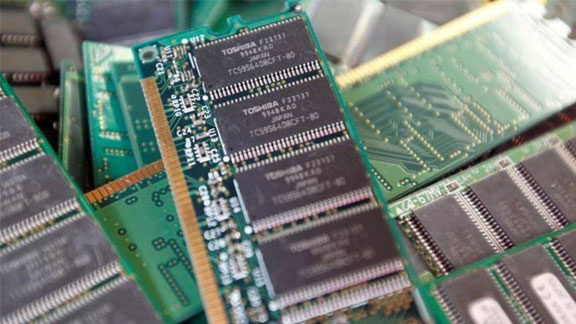Financialexpress
Feb 4, 2023
C-DAC developing India's first indigenous microprocessor
C-DAC’s roadmap for processors is aimed at helping the country become self-reliant in microprocessors development using indigenous design.
The Centre for Development of Advanced Computing (C-DAC) is working on the country’s first indigenously designed and developed family of microprocessors. C-DAC’s roadmap for processors is aimed at helping the country become self-reliant in microprocessors development using indigenous design.
C-DAC director general, Magesh Ethirajan, said C-DAC had achieved significant progress in the development of the VEGA series of dual core and quad core microprocessors and two designs are ready for fabrication. The first one is a 32-bit embedded processor which could be used in smart energy meters, smart water and gas meters, IoT devices, multimedia processing and AR/VR application, Ethirajan added.
“It is a low power, low footprint and low-cost chip which could be deployed for wider applications,” he said. The technology has been developed and distributed to institutes to further development. They had set an ambitious target of meeting at least 10% of the country’s microprocessor requirement, Ethirajan said.
The company was working closely with industry which could absorb this technology and make it a part of their next-generation product. C-DAC was also directly approaching end-users including government and utility companies, the DG said. World Bank funding for state government mandates the use of smart metering for water delivery, so a large quantity of procurement would happen in this segment, Ethirajan said. They had set an ambitious target of meeting at least 10% of the country’s microprocessor requirement, he added.
The country depends on imports for its microprocessors and C-DAC wanted to reduce this dependence. Apart from C-DAC’s Vega series of processors, IIT Madras has developed the Shakti series of microprocessors and has also made significant progress in this initiative of making the country self-reliant.

C-DAC director general, Magesh Ethirajan, said C-DAC had achieved significant progress in the development of the VEGA series of dual core and quad core microprocessors and two designs are ready for fabrication.
C-DAC has also developed another microprocessor Teja, which is a high-end 64-bit chip 180-nanometer technology. This is being fabricated at the semiconductor laboratory foundry in Chandigarh. Once these are ready, this would be launched in the market soon, the C-DAC DG said.
Col A K Nath (retd), executive director, C-DAC, said they were open to collaborating with the Indian industry partners for manufacturing indigenous products based on its in-house design.
Next year, they would start work on the next-generation processors – Dhruv and Dhanush Plus – and finally the octa-core processor in three years.
Under the ministry of electronics and information technology’s (MeitY), National Supercomputing Mission (NSM) programme, a power-efficient AUM HPC processor based on ARM architecture is being designed. C-DAC has also indigenously designed and developed a computer server, Rudra. Rudra, along with the AUM processor and Trinetra interconnect technology would help the country achieve self-reliance in supercomputing, Nath said.
C-DAC has a target to achieve 64 PetaFlops (PF) of cumulative compute power across the country by the end 2024. The 40 PF compute power will be based on the indigenously developed Rudra servers being manufactured in India. Supercomputing systems with a cumulative computing power of 24 PF have already been deployed at various premier academic institutions across the nation.
C-DAC has signed a contract with VVDN Technologies for the manufacturing of C-DAC’s Rudra servers. These servers will be used in the upcoming PARAM series of supercomputers to be built under NSM. Rudra server is designed as a dense form factor and targeted for HPC and hyperscale data centres. The transfer of technology for manufacturing of C-DAC’s Rudra server was already under process.
The one PF supercomputing system based on the Rudra servers is going to be installed at the Giant Metrewave Radio Telescope (GMRT) observatory under National Centre for Radio Astrophysics (NCRA). It would be conducting a real-time commensal search for Fast Radio Bursts and Pulsars. This instrument aims to discover more than a few hundred fast transient sources with host galaxy associations over the next few years of scientific operation. The demanding real-time application would be an acid test for the resilience and robustness of the technology developed by C-DAC, Nath added.